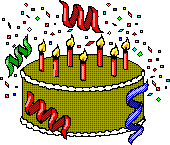


Family Network



|



Family Network



|
|
 Everything Brunette
       Traditions from Around the World:
In Some parts of South America and Central America, birthdays are celebrated with a pinata. The Pinata is a paper mache type animal that is filled with candy and small toys and is hung up from a pole or a tree. This is then hit with a stick to break open the pinata to get all the goodies out of it. The children are blindfolded so as to make it harder for them.
Birthdays are celebrated more for the children than for the adults, unless it is a milestone birthday such as 21, 30, 40 or 50.
At the childrens parties they have balloons and streamers are hung up and lots of friends are invited to the party. There are always presents, cakes and ice cream. The birthday person has a cake topped with candles; one for each year and they must try to blow them out in one breath. If successful their secret wish will come true. Sometimes the person having the birthday can choose what they want to do: bowling, swimming, arcades, amusement parks camping trips and so on.
A cake is made, and candles are put on top based on how old the person is. Then everyone sings the "happy birthday" song, and at the end of the song, the birthday child blows out the candles. If they blow them all out with one blow, their birthday wishes will come true.
The majority of American children, celebrate birthdays with a cake topped with lighted candles. Most families use the candles to represent how old a person is turning. When the cake is set before the guest of honor, he or she is supposed to make a wish, without telling anyone what it is. After making a wish, he or she tries to blow out the candles. If all the candles go out with one breath, it is believed that the wish will come true!
Some children receive birthday "spankings", which were originally based on superstition, but are now more of a birthday prank or a joke. Hundreds of years ago, spankings were given for each year of the birthday child's life. Beyond that number, a child received another spanking to grow on, one to live on, one to eat on, one to be happy, and yet another spanking to get married on.
At one time, it was considered back luck if the birthday celebrant was not spanked because it was believed to "soften up the body for the tomb." Historians are unsure if the practice of swatting the birthday girl or boy was treated as a joke, as people view it today.
Singing "Happy Birthday to You" has also been a long-standing tradition on birthdays as well. It was written by two American sisters in 1893, and has been translated into several languages around the world.
In the United States the sweet sixteen party is held for the girls. The symbol for the sweet sixteen party is sugar.
The Winnebago Indians have a big birthday and anyone can attend, people find out about birthday parties through word of mouth. These parties can last all evening and through to the night.
They can eat whatever they like for their birthday and it is made for them. The cake is taken around and shown to the guests and it is considered an honor to be asked to cut the cake.
After the meal the children play a hand game. This is played by an adult holding a bone or stone in one of his or her hands and the children have to try to guess where it is.
The native language of the Winnebago Indians is Ho-Chunk.
Native American tribes have placed significance on milestones in a child's development rather than the day he or she was born. The day a child takes its first step is cause for just as much rejoicing as the day he or she accepts the responsibilities of an adult, gets married, becomes a parent, etc.
If you are a Hopi indian, you might receive a beauitful hand-woven quilt for your birthday.
In several Latino cultures, a girl's 15th birthday, called a quinceanera, marks her passage into adulthood. This celebration often includes a religious ceremony at church, in which the young lady recognizes her heritage and her spiritual journey.
Many quinceaneras include a candle-lighting ceremony, where a young woman illuminates her parents' candles using the flame of her own candle. In turn, her parents light the candles of their parents, and so on.
In some Latin American countries, a young woman changes her shoes from flats to heels during the ceremony.   
Mens.Net | Womens.Net | Mothers.Net | Fathers.Net | Grandparents.Net | Teenagers.Net Santas.Net | EasterBunnys.Net | JackOLanterns.Net | FatherTimes.Net | StValentines.Net HarvestFestivals.Net | BirthdayCelebrations.Net
 Please read our Legal Statement and Privacy Policy.
|